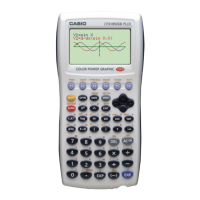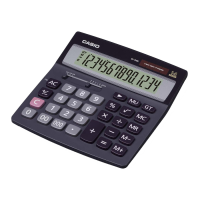20070201
7-3-1
Compound Interest
PV : present value
FV : future value
PMT : payment
n : number of compound periods
I % : annual interest rate
i is calculated using Newton’s Method.
S = 0 assumed for end of term
S = 1 assumed for beginning of term
F ( i ) = Formula I
u Formula II ( I % = 0)
Here:
i(1 + i)
n
(1 + i ×
S)[(1 + i)
n
–1]
=
α
i(1 + i)
n
(1 + i ×
S)[(1 + i)
n
–1]
=
α
(1+ i)
n
1
=
β
(1+ i)
n
1
=
β
+ (1 + i × S)[n(1 + i)
–n–1
]+
–
nFV(1 + i)
–n–1
ii
PMT
(1 + i × S)[1 – (1 + i)
–n
]
F(i)' = –
[
+S [1 – (1 + i)
–n
]
]
+ (1 + i × S)[n(1 + i)
–n–1
]+
–
nFV(1 + i)
–n–1
ii
PMT
(1 + i × S)[1 – (1 + i)
–n
]
F(i)' = –
[
+S [1 – (1 + i)
–n
]
]
PV + PMT × n + FV = 0 PV + PMT × n + FV = 0
PV = – (PMT × n + FV )PV = – (PMT × n + FV )
7-3 Compound Interest
This calculator uses the following standard formulas to calculate compound interest.
u Formula I
Here:
PV + PMT × + FV
i(1 + i)
n
(1 + i)
n
(1 + i × S)[(1+ i)
n
–1] 1
= 0
i =
100
I %
PV + PMT × + FV
i(1 + i)
n
(1 + i)
n
(1 + i × S)[(1+ i)
n
–1] 1
= 0
i =
100
I %
PV = –(PMT ×
+ FV ×
)
β
α
PV = –(PMT ×
+ FV ×
)
β
α
FV = –
β
PMT ×
+ PV
α
FV = –
β
PMT ×
+ PV
α
PMT = –
β
PV + FV ×
α
PMT = –
β
PV + FV ×
α
n =
log
{ }
log(1 + i)
(1+ i × S ) PMT + PVi
(1+ i × S ) PMT – FVi
n =
log
{ }
log(1 + i)
(1+ i × S ) PMT + PVi
(1+ i × S ) PMT – FVi

